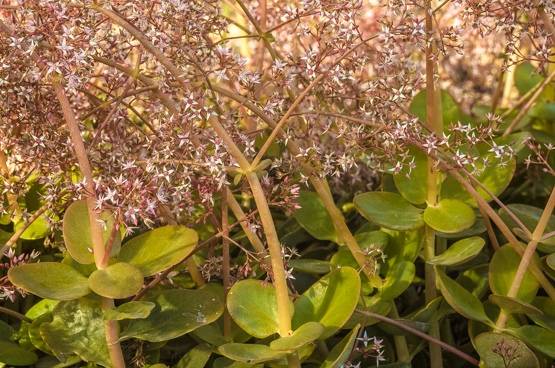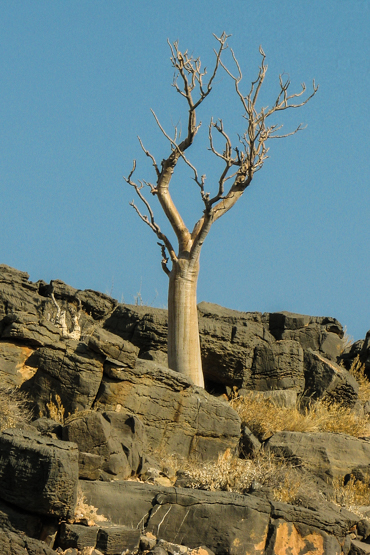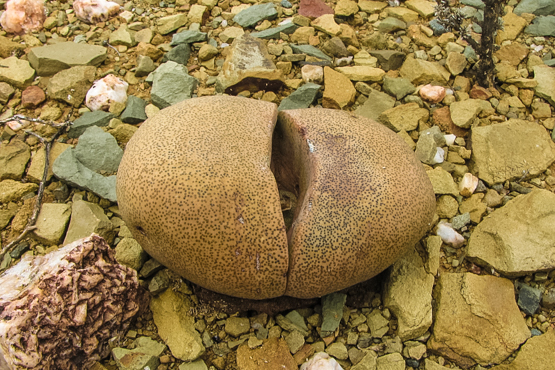The one thing that sets succulents apart from all other plants is the ability to store water to allow the plants to remain active even in periods when no water is available.
Although this does not make them immune to extreme lack of water, it of course helps to alleviate problems caused by temporary droughts.
Succulence is often described as a structural phenomenon, something you can see and feel, so that plants are called ‘‘succulent’’ when the leaves, stems and/or roots have a swollen appearance.
We can also look at succulence from a functional perspective, wondering how it affects the way a plant functions and survives in its habitat.
As these posts are not intended for professional botanists but for amateur plant aficionados, they are mainly concerned with the visible adaptations succulents have developed.
When looking at a collection of succulent plants it is easy to see that “some of them are more succulent than others”.
It is sometimes less easy, or even nearly impossible, to say whether a certain plant should be called a succulent or not. In other words, succulence is a continuum and there is no clear cut-off point between succulent and non-succulent plants.



So when we talk about ‘‘succulents’’, we should bear in mind that this is in fact shorthand for more correct but also slightly complicated phrases, such as ‘‘plants with notable succulence’’ or ‘‘very succulent plants’’.
There are many different kinds of succulent features, which may be combined in several ways and water may be stored in more than one organ. For these reasons it is very difficult to give a comprehensive (as well as comprehensible) definition of what succulents are.
The following definition is easy to understand:
“A succulent is a plant that stores water in its tissues as a mechanism to survive periods of drought in the growing phase.”
List of southern African succulent plants, G. F. Smith e.a., 1997.
The two definitions below are more comprehensive:
“A succulent is a plant possessing at least one succulent tissue. A succulent tissue is a living tissue that, besides possible other tasks, serves and guarantees an at least temporary storage of utilizable water, which makes the plant temporarily independent from external water supply, when soil water conditions have deteriorated such that the root is no longer able to provide the necessary water from the soil”
Life Stategies of succulents in deserts, D. J. Von Willert e.a., 1992.
“Succulence can be defined as follows: = storage of utilizable water in living tissues in one or several plant parts in such a way to allow the plant to be temporarily independent from external water supply but to retain at least some physiological activity.”
Living under temporarily arid conditions succulence as an adaptive strategy, Eggli U. and R.Nyffeler, Bradleya 27/2009, pages 13-36.
Succulence is a tried and tested solution for plants living in dry environments, but it is not the only possible strategy for surviving there. In the wild, succulents are often growing together with plants that use very different adaptations to stay alive.
The ability to store water has developed independently in around 50 different plant families. For many plants it is apparently important to have some degree of succulence, as it occurs in 4-5 % of higher plants. Estimates vary from about 8000 to plus or minus 13.000 -out of approximately 260.000 species (depending on what you call a succulent and how you define a species).
As it is of little use to store something that you cannot keep safe, succulents have also developed a variety of means to conserve the stored water.
It is this combination of storing and conserving water that causes the peculiar appearances of these plants.
When you follow this link, you will be taken to a gallery giving you some idea of the enormous diversity in size, shape and structure of (mainly South African) succulents.
For other posts in this series click here.